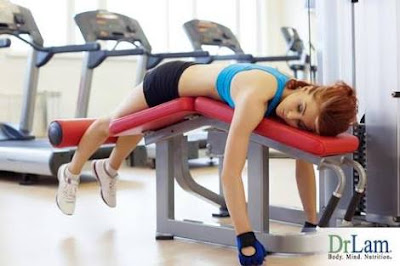Exercise is absolutely vital to your health, but a growing body of research indicates that there might be a point at which it stops being beneficial
and starts increasing your odds of heart problems or even an early death. The latest research, published in Mayo Clinic Proceedings, suggests that exercising too much may increase your risk of dying from cardiovascular disease.
GYM workouts are encouraged to be intense, but pushing your body too far and over-exerting your muscles can trigger a life-threatening condition – rhabdomyolysis.
A recent report published in The American Journal of Medicine revealed a woman ended up in hospital for two weeks after a spin class caused rhabdomyolysis.
It listed at least 46 other cases of the condition that were caused by spinning – the popular workout on a stationary bike.
You know the expression about no pain, no gain. But pain and other symptoms during exercise are not normal. That means you should pay attention when your body is sending you warning signs. “Be sensible if you have symptoms. It’s better to get help so you can exercise for years to come rather than suffer a bad side effect because you were being stubborn,” says Dr. Aaron Baggish, associate director of the Cardiovascular Performance Program at Harvard-affiliated Massachusetts General Hospital.
However, it can be triggered by any exercise, and experts say they have seen an increase among those who do high-intensity workouts.
The condition is where skeletal muscle dies and releases substances into the blood that can cause kidney failure.
It occurs as a result of traumatic skeletal muscle injury.
However, anything that causes muscle injury, dehydration, or kidney injury can up a person’s chances of developing the condition.
As well as over-exerting muscles, other triggers include hypothermia, extensive burns that cause muscle damage, dietary supplements containing ephedra and creatine, infections and heart attack or stroke.
It could also be caused by excessive or long-term alcohol or drug use.
Mild cases may not reveal any signs, but sometimes symptoms can appear within hours or days after a cause has occurred.
This means it can develop along with DOMS – or delayed onset muscle soreness – in the short time after a workout.
Common symptoms include muscle pain, muscle weakness, muscle swelling, dark urine, fatigue, irregular heartbeat, dizziness, confusion, and nausea or vomiting.
You should seek medical attention as soon as possible if you experience these symptoms. Left untreated, there can be life-threatening complications such as kidney failure.
Treatment varies on the severity of the case, and sometimes the kidney damage is irreversible. If physical activity causes you to experience chest or joint pain, shortness of breath, or lightheadedness, Dr. Baggish, recommends that you stop exercising immediately and pick up the phone. “Don’t push through the exercise, which may cause damage to your heart or muscles, but do call your doctor and get your symptoms checked out,” he says.
If you’re not sure which doctor to call, start with your primary care physician. If you have an underlying condition that may be related to your symptoms, such as a heart condition, call your specialist, such as a cardiologist. It may not be necessary to be seen by a physician the same day that you experience symptoms. But you need to speak that day to someone in your physician’s office, who will tell you how quickly you should be seen.
Don’t assume that your symptoms mean you should not give exercise another try. Talk to your doctor about when you can return to your exercise routine and whether you should make any changes to it. “Everyone can do a form of exercise if it’s done carefully, with the supervision of a doctor,” says Dr. Baggish.
Avoiding over-exercising is one of the ways to prevent the condition.
It’s recommended you increase workout intensity or frequency slowly, and listen to your body.



Leave a Reply